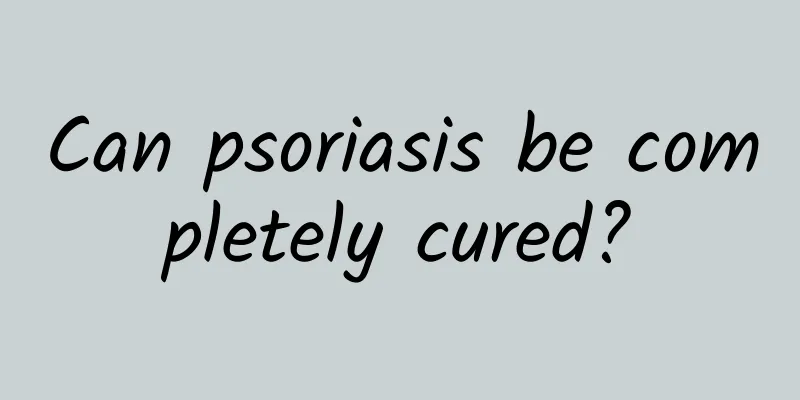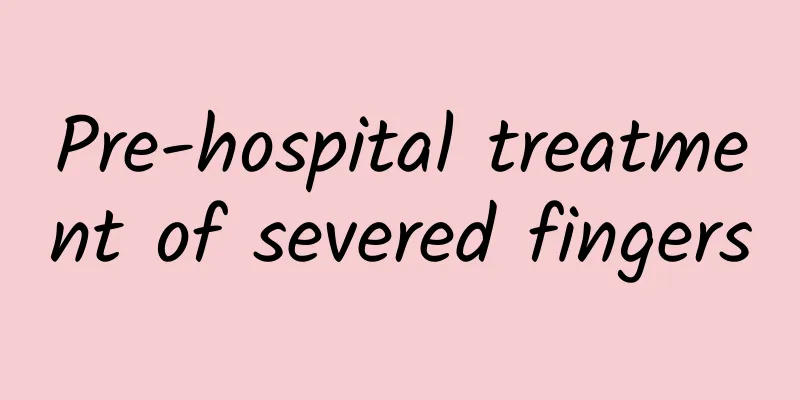How to treat the absence of menstruation two years after giving birth?

|
Giving birth to a child is one of the happiest moments in a woman’s life, because after about ten months of gestation, seeing the baby being born healthy is simply extremely happy and gratifying. During pregnancy, a woman's menstruation will be temporarily interrupted, and after giving birth, menstruation will resume. So, some women have not had their periods for two years after giving birth. How should they be treated? 1. Treatment of the cause Some patients can resume menstruation after the cause is removed. For patients with neurological or mental stress causes, effective psychological counseling should be provided; those with amenorrhea caused by low body weight or excessive dieting or weight loss should adjust their diet and strengthen their nutrition; those with exercise-induced amenorrhea should appropriately reduce the amount of exercise and training intensity; for amenorrhea caused by the hypothalamus (cranial pharyngeal tumors), pituitary tumors (excluding tumors that secrete PRL) and ovarian tumors, the tumors should be surgically removed; for high-Gn amenorrhea containing Y chromosomes, the gonads have malignant potential and gonadectomy should be performed as soon as possible; amenorrhea caused by reproductive tract malformations and menstrual drainage disorders should be corrected surgically to ensure smooth menstrual blood flow. 2. Estrogen and/or progesterone therapy Estrogen therapy should be used to treat amenorrhea caused by adolescent sexual immaturity and adult hypoestrogenism. The principles of medication are as follows: (1) Promote bone growth For adolescent patients with sexual immaturity, when their height has not yet reached the expected height, treatment should be started with a small dose, such as 17β-estradiol or estradiol valerate, or conjugated estrogens; the dose can be increased after the height reaches the expected height. (2) Promote further development of sexual characteristics Adults with amenorrhea due to hypoestrogenemia should first use 17β-estradiol or estradiol valerate, or combined estrogens, to promote and maintain overall health and sexual development. After the uterus develops, progestins should be added regularly according to the degree of endometrial proliferation, or estrogen and progestin sequential cyclic therapy should be used. It is recommended that natural or near-natural progestins, such as dydrogesterone and micronized progesterone, be used for cyclical therapy in adolescent women, which are beneficial to the recovery of reproductive axis function. For patients with signs of androgen excess, progestin formula preparations containing anti-androgen effects can be used. For amenorrhea patients with a certain level of endogenous estrogen, progestin treatment should be used regularly to allow the endometrium to shed regularly. 3. Endocrine therapy for disease pathology and physiological disorders According to the etiology, pathological and physiological mechanisms of amenorrhea, targeted endocrine drug treatment is used to correct the disordered hormone levels in the body and thus achieve the treatment goal. For example, CAH patients should be treated with long-term glucocorticoids; PCOS patients with obvious signs of hyperandrogenism can be treated with combined estrogen and progesterone oral contraceptives; PCOS patients with combined insulin resistance can be treated with insulin sensitizers. The above treatment can restore menstruation in patients, and some patients can resume ovulation. 4. Induce ovulation For patients with low Gn amenorrhea, after estrogen therapy is used to promote the development of reproductive organs and the endometrium has responded to estrogen and progesterone, human gonadotropin (hMG) combined with human chorionic gonadotropin (hCG) can be used to promote follicle development and induce ovulation. Since it may cause ovarian hyperstimulation syndrome (OHSS), the use of Gn to induce ovulation must be performed by an experienced physician under the conditions of B-ultrasound and hormone level monitoring; for amenorrhea patients with normal FSH and PRL levels, clomiphene citrate can be the first choice as an ovulation-inducing drug because the patient has a certain level of endogenous estrogen in the body; for amenorrhea patients with elevated FSH levels, ovulation-inducing drugs are not recommended due to their ovarian failure. 5. Assisted Reproductive Treatment Assisted reproductive technology can be used for patients who desire to have children, who have failed to become pregnant after induced ovulation, who have amenorrhea and combined with fallopian tube problems, or who are infertile due to male factors. |
<<: Is it normal to have intercourse on the seventh day?
>>: How many days is the safe period before and after menstruation?
Recommend
Why is there no light in your eyes when you grow up?
Overwhelmed by life and work? Or is it too pollut...
What is the use of a phone watch? How to insert a card into a phone watch
Phone watches are becoming more and more popular....
8 or 10 o'clock the night before
Glucose tolerance tests are generally based on bl...
Mild abdominal pain after amniocentesis
Amniocentesis is a relatively important examinati...
[Fat Bear Science] When you scream in pain, should you take painkillers or not? Experts say we need to understand cancer pain scientifically
Cancer pain has always been a major problem that ...
Why does it hurt down there after having sex?
Sexual life is supposed to be a pleasant thing, b...
Abdominal pain one week after childbirth
Generally speaking, women's physical fitness ...
Counterpoint: Global VR headset shipments to drop 12% year-on-year in 2024
According to the latest report from Counterpoint,...
Can I have sex before IUD is inserted?
There are certain precautions when inserting an I...
Can urinary tract infections be cured?
When treating a disease, you cannot just treat th...
Even the noise that drives people crazy can be “drawn”!
What is noise? Whatever you think it is. Noise is...
What causes vaginal bleeding after bowel movements?
Vaginal bleeding is a common gynecological diseas...
I heard that eating watermelon for dinner can help you lose weight? Are you a qualified watermelon eater?
Many people saw "eat half a watermelon at ni...
What are some tips for menstruation?
During menstruation, women's quality of life ...
What is the cause of pain on the left outer thigh of a woman?
There are many kinds of diseases in daily life, d...









